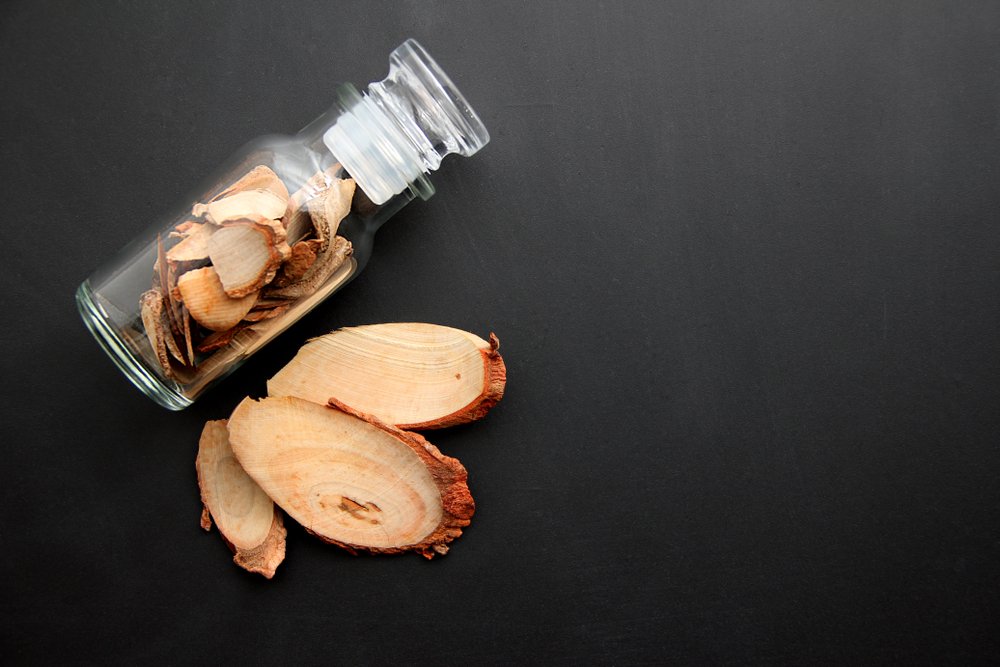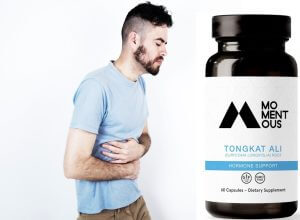

The mark of quality of any herbal product is the ability to consistently produce the specified level of concentration from the bio-active compounds, thus indicating the “potency of the herb”. In simple terms, this is the amount required to produce a positive healthy effect of given intensity. If you want the best quality herbal product, then look no further. The best herbal products in the market are, or should be at least, chromatography tested.
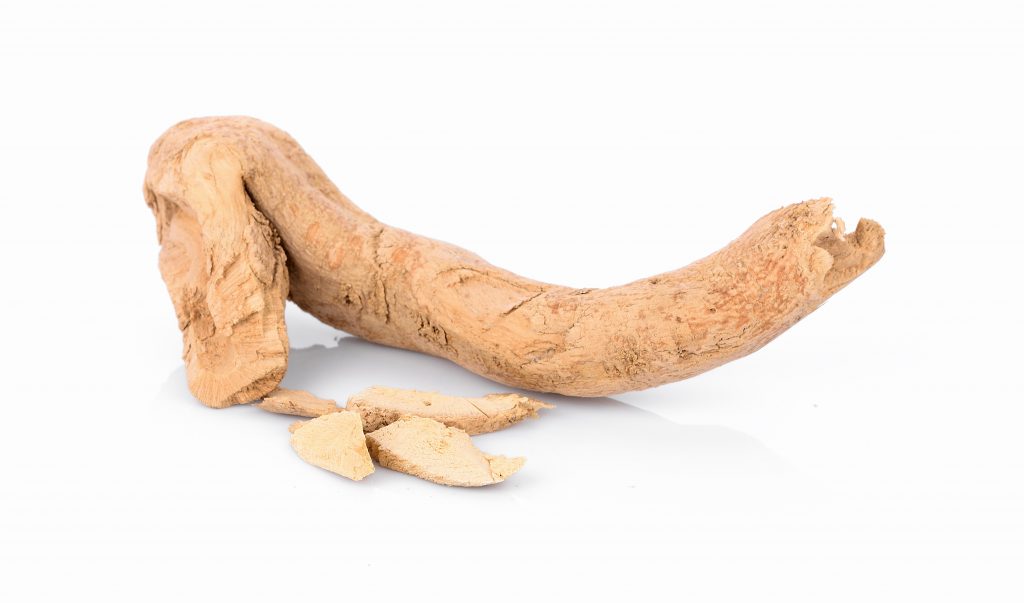
Quality and Chromatography Fingerprint
The mark of quality of any herbal product is the ability to consistently produce the specified level of concentration from the bio-active compounds, thus indicating the “potency of the herb”. In simple terms, this is the amount required to produce a positive healthy effect of given intensity. If you want the best quality herbal product, then look no further. The best herbal products in the market are, or should be at least, chromatography tested.
What is Chromatography?
Chromatography fingerprint is a technique widely used in bio-chemical laboratories to separate chemical components or compounds from a mixture of fluid of a biological origin. Types of chromatography techniques include:
Chromatography is used in many different industries and not just limited to pharmaceutical or nutraceutical industries. The common use of chromatography that may be familiar to most people is when you watch scenes about crime from your favourite TV shows – when the police or investigators use chromatography to identify clues at such as blood and others at a crime scene.
The principle behind chromatography is to separate the molecular structure (at the atomic level) of a property (solid or fluid) into different groups of similar compounds. When the separation process is performed correctly using standard protocols, the result from chromatography can be used to identify and analyze different bio-active or non-bio-active components through microscope or other form of visualization methods.
Here is a snapshot taken from High Performance Liquid Chromatrography (HPLC) performed on raw Tongkat Ali roots taken from eight samples in Malaysia for the production of Akarali products.
Each vertical bar shown in the chromatography film represents one sample and the various tones or shades represent various levels of bioactive compounds contained in the samples.

The above show irregularities from the chromatography images taken from various samples of Tongkat Ali roots. Can you distinguish the bad apples from these eight Tongkat Ali samples? The ones which did not fulfill certain quality specifications, that is, based on the bio-active compounds such as eurycomanone, will display tones or darker shades on top. These were evident in two samples, the second and third sample from the right.
Like we have said earlier, chromatography plays an increasingly crucial role in many pharmaceutical and food industries, adopted for stringent quality control protocols to ensure consistency on the standards delivered. This approach is also commonly used to identify very small quantities or traces of contaminants or impurities such as PCBs in waste oil, and pesticides. For example, chromatography was adopted by the Environment Protection Agency to test drinking water, or bottled mineral waters by suppliers. Alternatively, liquid chromatography is used to test waters to look for pollution in lakes and rivers.
Here are four main reasons why the best herbs such as Tongkat Ali should be chromatography-tested before going through extraction process from its roots.
1. No two roots are the same
Just like humans, plants are organic beings. If you take two identical plants today, you will notice differences in terms of the height, size of the branches and leaves and other physical attributes. Even if the plants are identical twins, there are still minor differences in them. If you find that hard to believe, check out twin babies and tell us if they are 100% identical in their behaviour, personality or attitudes.
Regardless of the wide range of marketing claims out there, no two roots of Tongkat Ali plants are actually the same. Each root contains different levels of quassinoids and bio-active compounds of eurycomanone, eurycolactone, polyasscharide, glycosaponin and others. Therefore, extracting the same level of compounds from any plant requires a standardized extraction methodology and the right technology.
A typical high-quality extract from Tongkat Ali should contain a verified amount of the bio-active properties within an acceptable range for manufacturing purpose. The result of a High Performance Liquid Chromatrography (HPLC) will yield the following specification:
| Bioactive compounds | Specification |
| Eurycomanone | 0.8 – 3% |
| Total Protein | >22% |
| Total Polysaccharide | >30% |
| Glycosaponin | >35% |
One of the obvious ways for manufacturers to control the quality is to harvest and source Tongkat Ali in a similar location, that is, tropical rainforests with the highest level of bio-active properties. Now, it may sound simple, but let’s just say the deeper you enter the rainforests, the higher the likelihood of obtaining a higher quality of Tongkat Ali. And that is just the starting point of the challenging world of Tongkat Ali harvesting.
The marked differences of quality from various Tongkat Ali products in the market naturally demands for further standardization and regulation for Tongkat Ali manufacturers. A standardization of the processes involved, from harvesting, root selection, root extraction, drying down to packaging are crucial in delivering consistent effectiveness of claimed medical benefits.
When coupling the chromatography with different extraction methods such as the freeze-dried water extract method, it produces a significant difference in terms of medical benefits to your body. For those seeking premium Tongkat Ali products, the exquisite marque of purity from an herbal product lies in its extraction and formulation process. There is a handful of extraction facilities which have been accredited and followed these practices religiously to ensure quality production of Tongkat Ali root extracts.
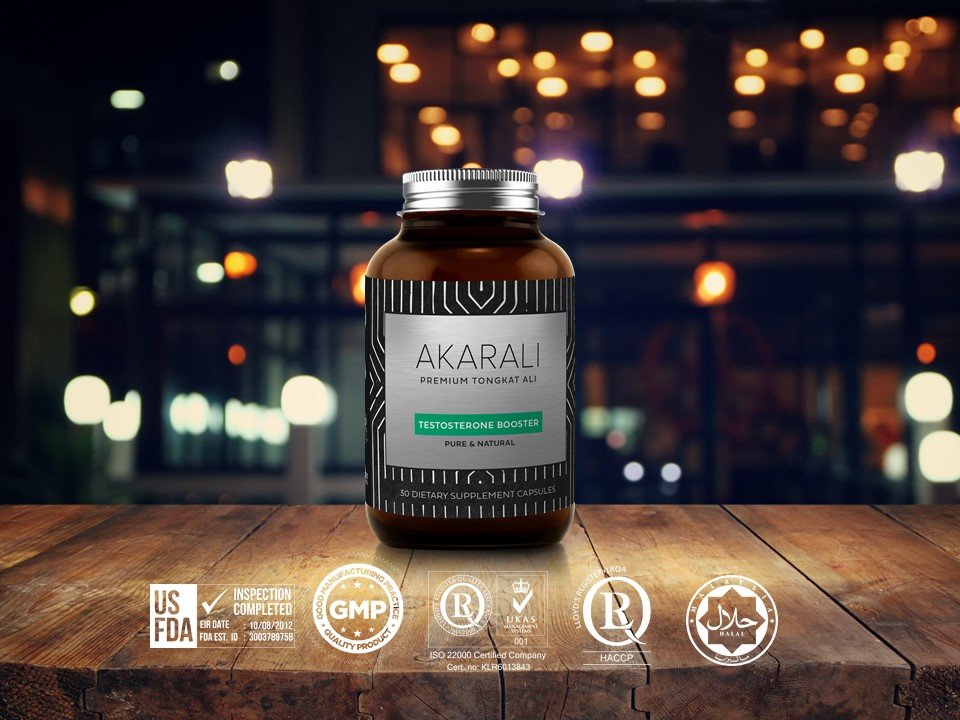
2. It’s wholly natural, without chemical pollutants
Tongkat Ali herb is unlike synthetic drugs such as Viagra which can be artificially developed and manufactured in a lab environment with consistent active molecular properties. To those seeking an instant “Pfizer Riser”, then Tongkat Ali may not be for you. It takes patience to grow before it can rise to the occasion.
Being an organic matter from mother nature, these plants “talk” to each other as they grow in a healthy community of other flora and faunas. The biodiversity has its own merits but if you seek the best herbal properties than you must allow the plants to grow naturally in its natural habitat.
Essentially, the ideal environment to start growing Tongkat Ali would be a place with suitable climate (temperature, sunlight and humidity), native to the plant’s origin. Tongkat Ali strives to grow slim and slender to chase the sunlight sources in the deep rainforests. The second most important thing is the soil component and access to pure clean water. An average annual rainfall of 2,000-3,000 mm typically found in Malaysia is ideal for the Tongkat Ali plant. In fact, it will grow steadily in a constant temperature range of 25–30ºC. It is fundamental for the plants to grow for at least 5 years before bio-active compounds are naturally activated and stored in its roots.
The above describes why natural environment is very important to the plant’s “health”. A plant with green leaves does not mean that the plant is “healthy” or “happy”. A happy plant is a healthy plant. That is the main reason some herbs are left in the wild rainforests to grow in in its natural habitat.
For nature to remain as natural as possible, we conveniently forget that natural bio-active compounds, even from the best herbs, are not easily extracted despite the widespread marketing claims out there.
Unless there is a proper documented process in place to identify and analyze the bio-active components constantly, then some of these herbal products are merely placebo gimmicks that destroy the reputation of the Tongkat Ali.
For that reason, chromatography fingerprinting should be part of the standard operating procedure in the nutraceutical / herbal industry.
3. To identify impurities and contamination
Even for the finest Tongkat Ali plant that grows in the deep rainforests of Malaysia, exposure from sunlight, rain water, humidity, fungus, insects or bacteria infestation from surrounding areas, human interventions and other external conditions can result in contamination or impurities that may be detrimental to the overall quality when it is harvested.
Chromatography can be a proxy indicator among other techniques to verify the level of impurities and contamination from herbal products. A good manufacturer will always ensure regular monitoring of quality herbal extract by taking samples from the raw materials that arrive at the extraction facility.
The result below shows an example of Tongkat Ali root samples that contain a high level of bioactive properties, and almost free from impurities and human contamination.
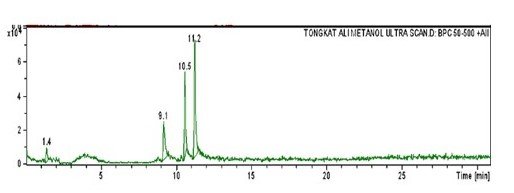
The result shows several noticeable peaks, indicating a high level of concentrated bio-active properties between 8th to the 12th minute after the root is subjected to the High Performance Liquid Chromatography (HPLC). This profile represents a good quality Tongkat Ali, making it more identifiable and quantifiable in the quality monitoring process.
Fake or Tongkat
Ali roots with high level of impurities will not exhibit such a profile when
exposed to the liquid chromatography tests in the laboratories. The level of
concentration from bio-active compounds such as eurycomanone differ
significantly when the plant is harvested from unknown suppliers or sourced
from less reputable sources.
4. To identify fake and dishonest suppliers
Let’s face the harsh realities. The herbal industry is a USD8 billion dollar business and some are taking the advantage of this growing trend by cutting corners and delivering sub-quality products. As far as 2010, the proportion of counterfeit medications sold over the Internet has grown from 44% to 90%, with remedies for sexual dysfunction accounting for the greatest share.
Meanwhile, the United States FDA has banned numerous products claiming to be Tongkat Ali (Eurycoma longifolia by its scientific name) but in fact containing analogues of sildenafil. This has given Tongkat Ali a bad reputation in the early years of its existence as a dietary supplement.
To educate the consumers, here are some of the common counterfeit approaches taken by dishonest suppliers of Tongkat Ali in the market today:
| Common counterfeit approach by herbal suppliers | Likelihood of occurrence |
| Mixing with other parts of Tongkat Ali plants – such as branches, twigs, bark | Very high |
| Mixing grounded Tongkat Ali powder with unknown plants that taste bitter like Tongkat Ali | High |
| Mixing Tongkat Ali powder with sildenafil (ingredients used in Viagra) | Medium / Common |
| Mixing grounded Tongkat Ali roots with low quality Tongkat Ali roots (pre-mature plants, plants from unknown countries), etc. | Less Common / Low |
| Sourcing Tongkat Ali harvested illegally in an open field (and not in deep rainforests) through mono-cropping using chemically infused fertilizers to accelerate growth | Medium / Common |
With chromatography fingerprinting, the unique identity or profiles of Tongkat Ali originating from such dishonest practices can be established and identified early before it escalates into a high risk to manufacturers. Risk mitigations are taken to remove raw material suppliers at source and other proactive measures taken to tackle the root-cause of the problems before the Tongkat Ali roots or raw materials reach the extraction facility. The best chromatography practice is to perform sampling for each bag of 100kg of Tongkat Ali raw materials sourced from the rainforests.
Getting the best is a rarity
Premium Tongkat Ali, like gold and precious stones, is chiefly prized because of its rarity. Beyond the conventional wisdom, natural herbs like Tongkat Ali bring quantifiable medical benefits for generations.
The unique gift of nature is that not all herbal plants are equal. But mankind and technology have discovered meaningful ways to translate rarity into purity that we all deserve. To those seeking the best from herbal products, chromatography is one step forward.
